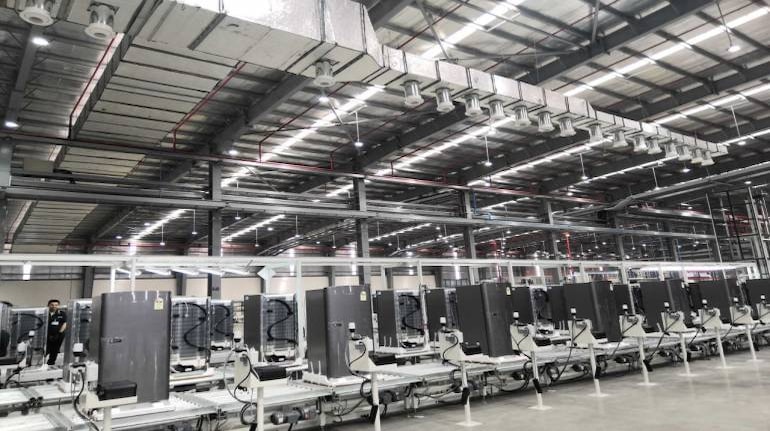



Even as China lifted the 77-day lockdown in Wuhan amidst the coronavirus outbreak, the production is yet to resume in full swing in the country. With this, appliance-makers in India are also facing the brunt and slowly moving to the ‘red zone’ where inventory supply is diminishing.
As far as finished goods are concerned, with the supply of components like air compressors from China having hit in January itself, there is a dearth in the inventory of completely built products to be sold in the market.
Industry officials have told Moneycontrol that, if production does not resume by May, inventory supply would dry up for the first time in the history of white goods industry in India.
For Indian white goods firms, the production has already been suspended across the country since March 25 when the government announced a lockdown. This has led to the thinning of inventory on one hand while, on the other, non-availability of key components from China is proving to be a dampener.
“There are talks of the government allowing production to resume in phases from May onwards. However, how do we begin manufacturing with components for air-conditioners and refrigerators not even delivered for products ready for dispatch?,” said the head of home appliances at a mid-sized electrical goods firm.
Moving to the ‘red zone’ means that even when there is a partial lifting of the lockdown, customers will not be able to buy products. Goods like refrigerators and air conditioners are most in demand during the summer season in India and there is already an impact on sales on that front.
Appliance makers already increased prices in February/March after COVID-19-related lockdown had led to factories in China shutting down. This halted the supply of key components to Indian factories.
Also Read: Live updates of coronavirus outbreak in IndiaFurther, it is also estimated that appliance makers in India may have to take a Rs 4,000 crore hit due to a shutdown in production operations due to the coronavirus outbreak.
Companies like Samsung, Panasonic, Godrej Appliances, Havells, Voltas, Thomson (Super Plastronics) have halted manufacturing activities in the wake of a lockdown across the country.
Even though the majority of appliance companies manufacture products in India, key components like panels, air compressors and hydraulic motors are imported from abroad.
Importing a finished product is expensive since the government has imposed a 20 percent import duty on completely built units that are brought in from other countries. With import being ruled out as a temporary option to mitigate the dearth of products in the market, a price rise is the only option.
Follow our full coverage of the coronavirus pandemic here.Discover the latest Business News, Sensex, and Nifty updates. Obtain Personal Finance insights, tax queries, and expert opinions on Moneycontrol or download the Moneycontrol App to stay updated!
Find the best of Al News in one place, specially curated for you every weekend.
Stay on top of the latest tech trends and biggest startup news.